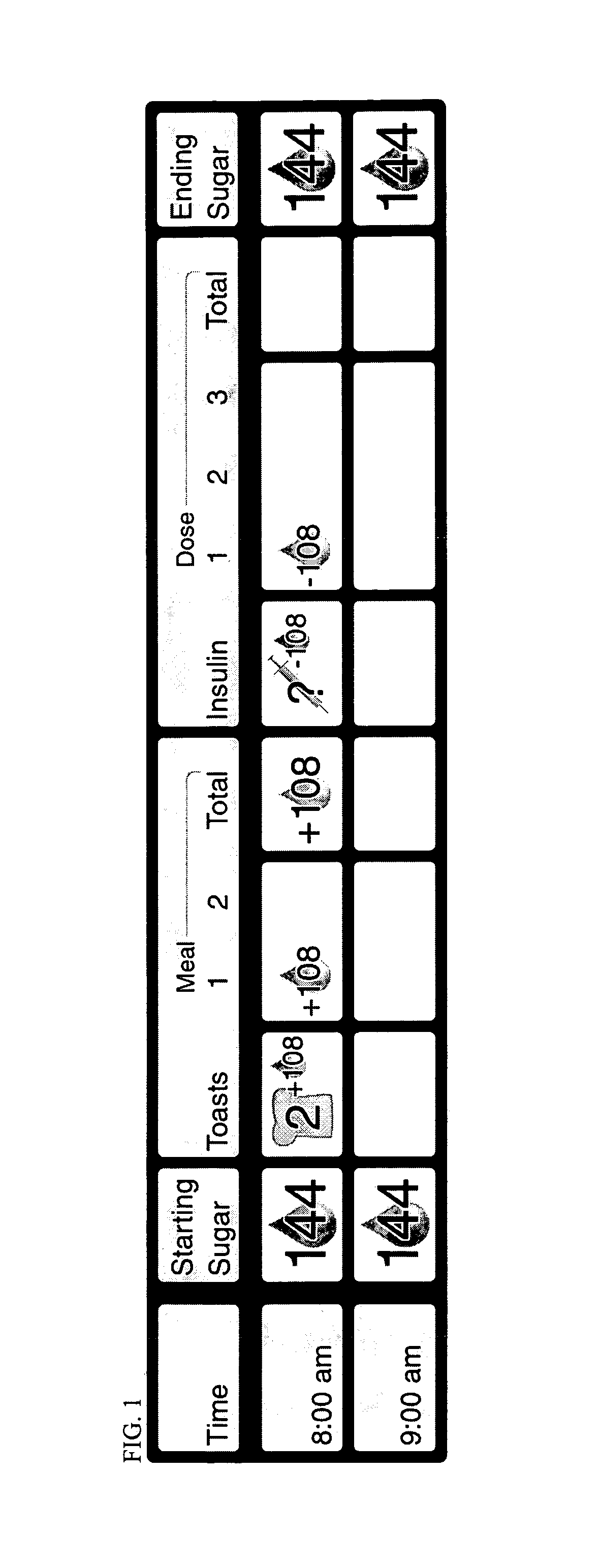Method of food and insulin dose management for a diabetic subject
a technology of diabetes and insulin dose management, which is applied in the field of diabetes patient food and insulin dosing, can solve the problems of high sugar condition, brain damage and death, and it takes insulin to reduce a high sugar condition in a few hours
- Summary
- Abstract
- Description
- Claims
- Application Information
AI Technical Summary
Benefits of technology
Problems solved by technology
Method used
Image
Examples
example
[0392]Note that we put a reminder at 11:00 pm, to take the intermediate-acting insulin shot, discussed above, to last through the night.
[0393]Looking at these results, they present some problems. If the insulin starts to act, right as it is taken, the diabetic will be hypoglycemic (blood sugar under 72), from 6:00 to 8:00 pm.
[0394]Now one can see the advantage of having done the experiment, and of doing the tables. If in fact it was found in the experiment, that the fast-acting insulin waited an hour, before “kicking in”, then the table would look like FIG. 24, Example 2.
[0395]The results are certainly better, for blood sugar values of 162 and 180 are certainly not severe, but this can be further improved.
[0396]To reflect the lag in your insulin having its effects, the dose before lunch can be moved an hour earlier. (FIG. 25)
[0397]It is not under the perfect 126 from 9:00 to 11:00 am, but it is very good indeed overall. If, on the other hand, going back to Example 2, the insulin in ...
PUM
| Property | Measurement | Unit |
|---|---|---|
| glycemic index | aaaaa | aaaaa |
| weight | aaaaa | aaaaa |
| period of time | aaaaa | aaaaa |
Abstract
Description
Claims
Application Information
 Login to View More
Login to View More - R&D
- Intellectual Property
- Life Sciences
- Materials
- Tech Scout
- Unparalleled Data Quality
- Higher Quality Content
- 60% Fewer Hallucinations
Browse by: Latest US Patents, China's latest patents, Technical Efficacy Thesaurus, Application Domain, Technology Topic, Popular Technical Reports.
© 2025 PatSnap. All rights reserved.Legal|Privacy policy|Modern Slavery Act Transparency Statement|Sitemap|About US| Contact US: help@patsnap.com



